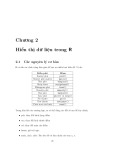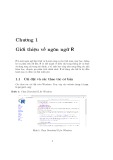
Lecture 26

Recap
Saving Plots
Summary of Chapter 5
Introduction of Chapter 6

Function M-files
User-defined functions are stored as M-files and can be
accessed by MATLAB if they are in the current folder or
on MATLAB’s search path

Syntax of Function M-file
Both built-in MATLAB ® functions and user-defined
MATLAB functions have the same structure
Each consists of a name, user-provided input, and
calculated output.
For example: the function
cos(x)
is named cos
takes the user input inside the parentheses (in this case, x )
calculates a result
The user does not see the calculations performed, but just

Continued….
User-defined functions are created in M-fi les. Each must
start with a function-definition line that contains:
The word function
A variable that defines the function output
A function name
A variable used for the input argument
For example:
function output = my_function(x)
is the first line of the user-defined function called
my_function
It requires one input argument, which the program will








![[Mới nhất] Lecture note Data visualization - Chapter 28](https://cdn.tailieu.vn/images/document/thumbnail/2020/20200723/nanhankhuoctai10/135x160/2961595506403.jpg)
![[Mới nhất] Lecture note Data visualization - Chương 27](https://cdn.tailieu.vn/images/document/thumbnail/2020/20200723/nanhankhuoctai10/135x160/8161595506425.jpg)
















